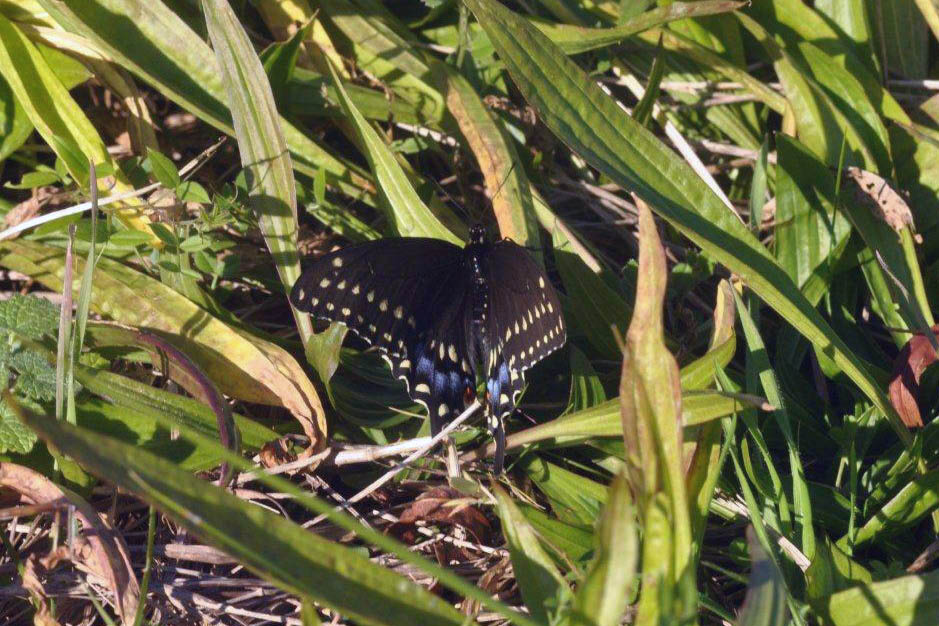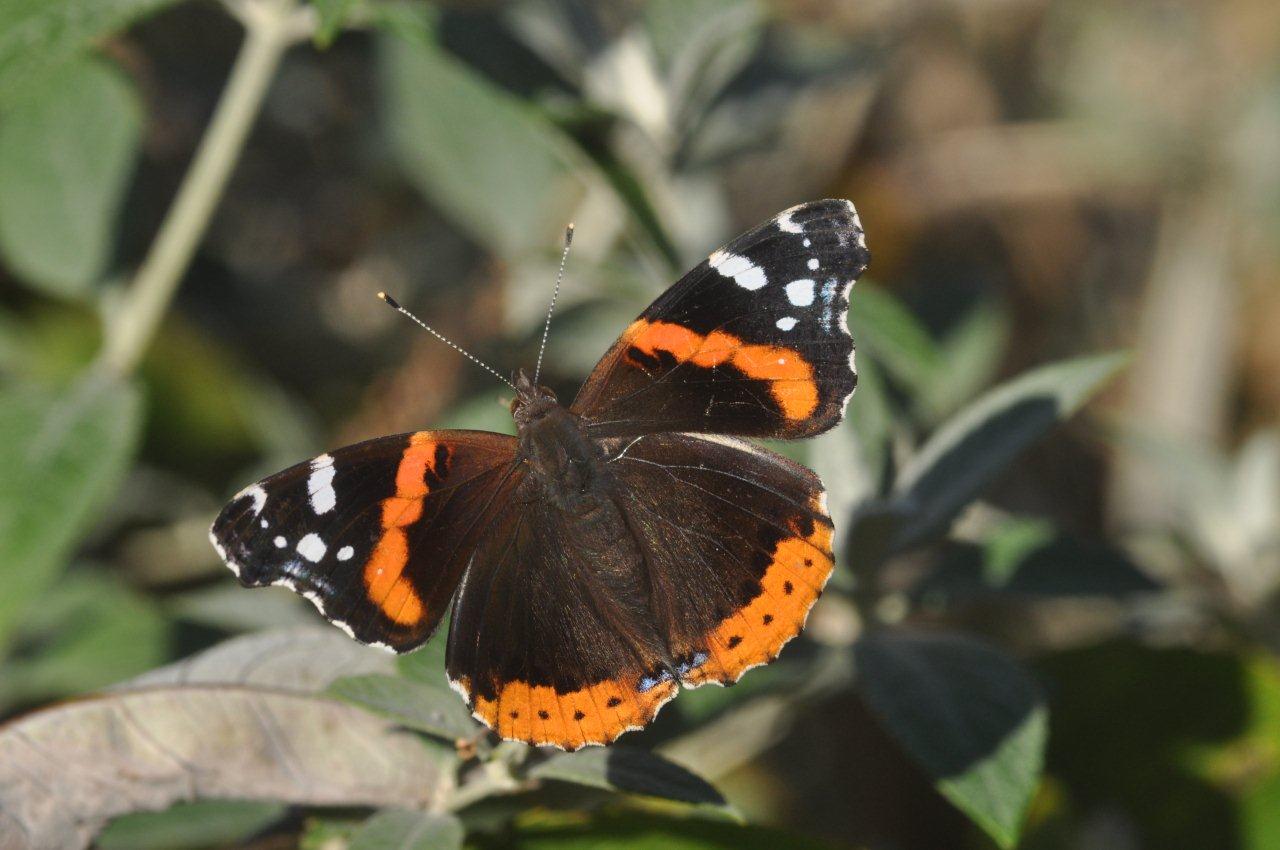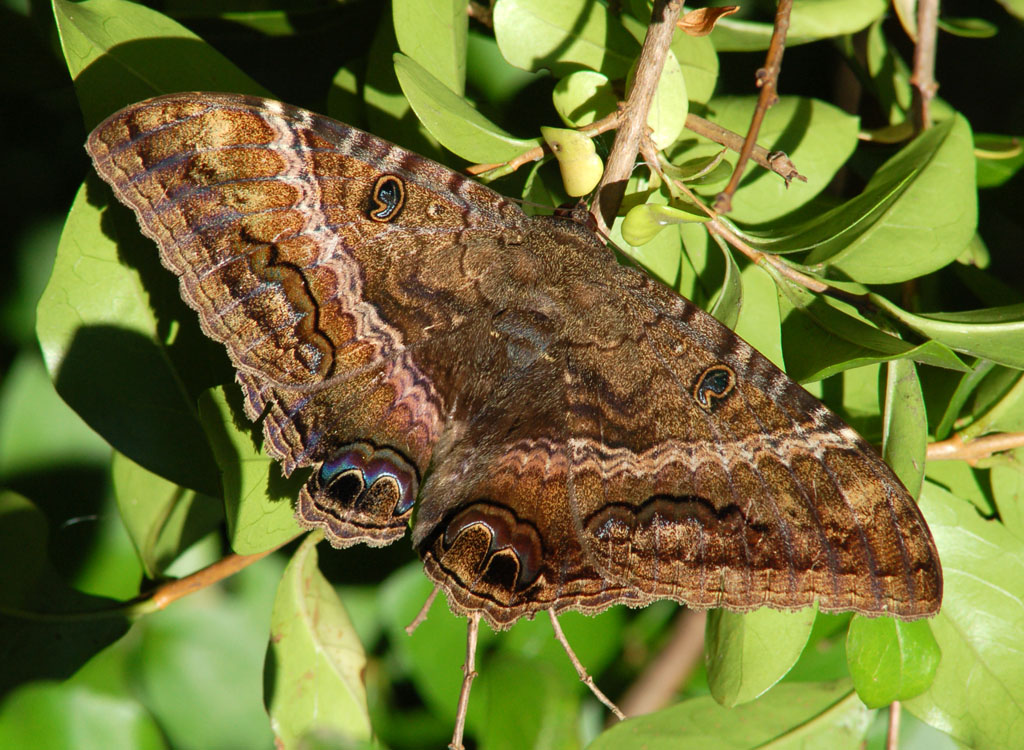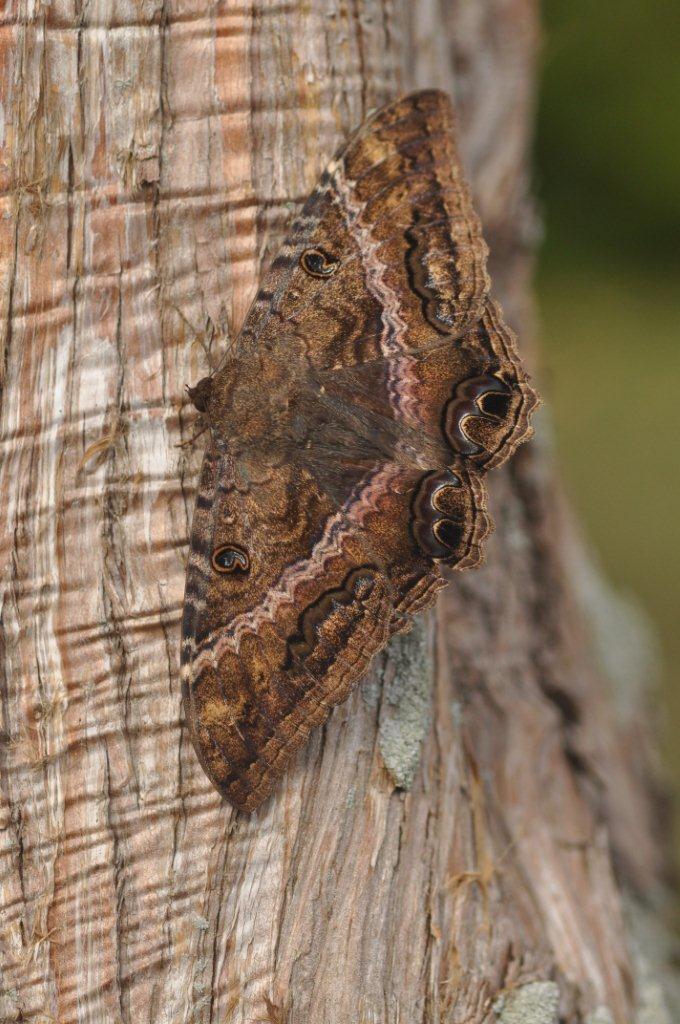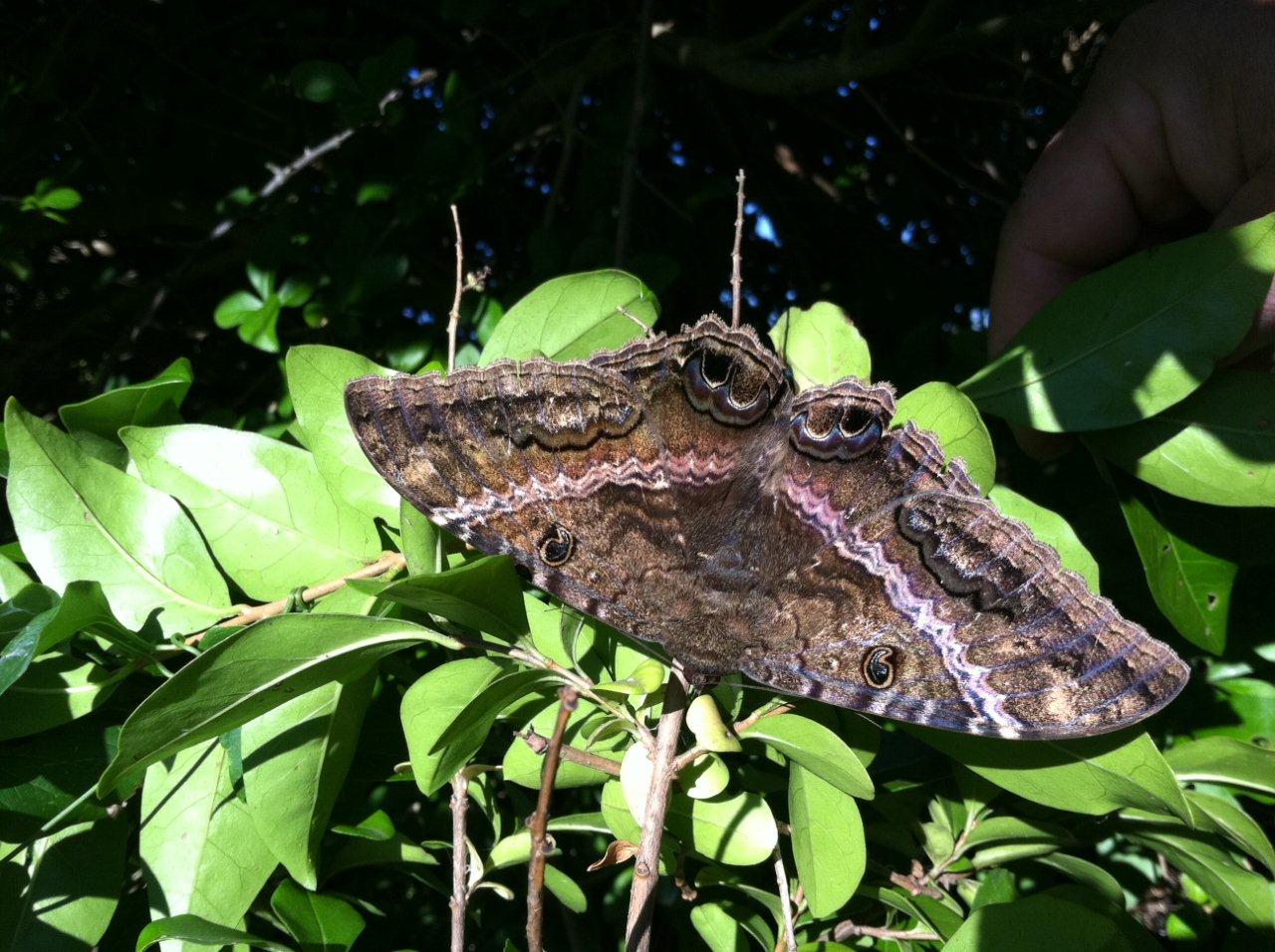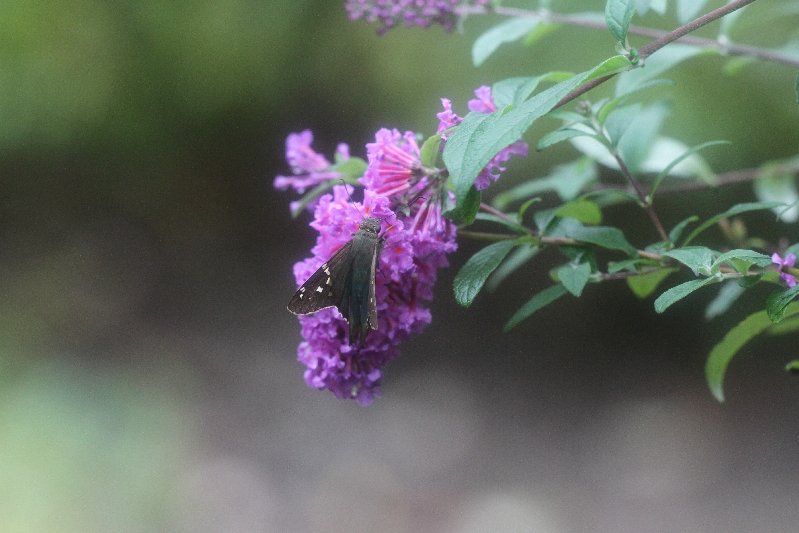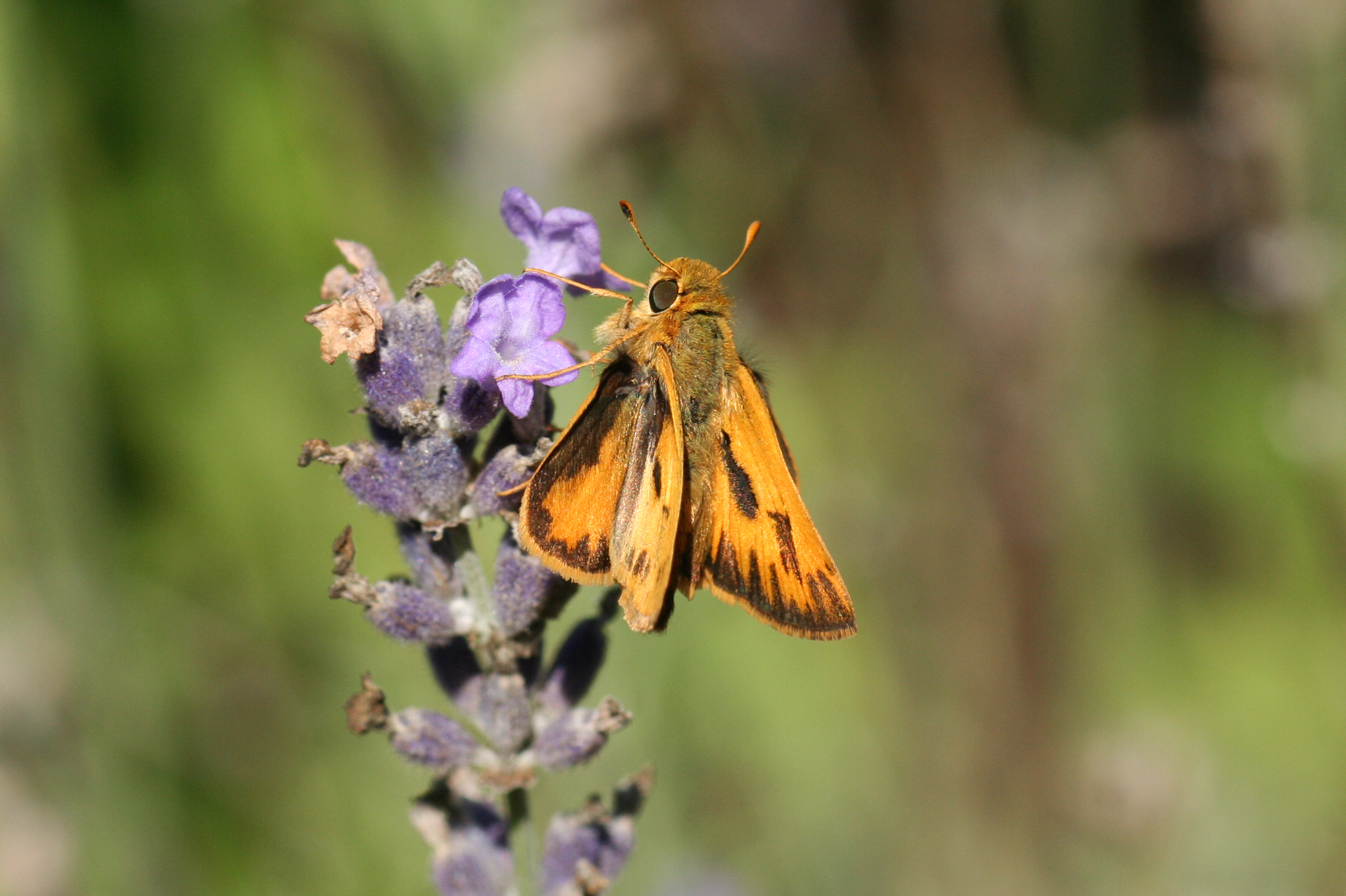
Male and female orange sulphurs nectaring on self-heal, Rt 9 and Avalon Blvd, by Will Kerling, January 6, 2012.
Maybe the title here should be, “And the heat goes on…”
As our warm weather pushes deeper into winter, butterflies continue to fly. One week into January, we have had 22 reports of flying adults, totaling 59 individuals. Orange sulphurs comprise the majority — 13 reports, totaling 49 individuals. The remaining 10 reports involve single individuals: mourning cloak (1 report), red admiral (3 reports), monarch (3 reports), question mark (1 report), and anglewing, sp. (2 reports).
Although almost all sightings come from southern Cape May County, we also have reports from Cumberland, Ocean, and Salem Counties.
Ten observers have seen butterflies in 2012 so far: Will Kerling, Chris Tonkinson, Cynthia Allen, Bill Schuhl, Dave Amadio, Jim Dowdell, Rick Radis, Vince Elia, John Roberts, and Ellen Creveling.
While celebrating our tough flyers and our sharp-eyed observers, it’s hard to ignore an awkward question: Is this warm weather all-in-all a good thing?
Anyone who reads this blog or chips in on our log wants to see more butterflies, the more the better — and it’s going to be fun to see how many weeks of 2012 will have butterflies for us to see. (Can we find butterflies in February and so extend our monthly streak still farther?) Nevertheless, any conscientious New Jersey naturalist must also have mixed thoughts about what has been a very mild winter so far. Our butterflies’ continued presence suggests other insects are also surviving in higher numbers — some of them harmful. Southern pine beetle (Dendroctonus frontalis) is the most obvious example:
NJ DEP info on southern pine beetle
That’s a downbeat way to end this post, I realize, but both birders and butterflyers have made this point in conversations, and I didn’t want to let it seem that we celebrate our finds blindly, unaware of what our data might suggest about wider and larger issues.
Keep at it, everyone! And if a sudden arctic blast sends all of southern NJ into a deep freeze for a few weeks, let’s remember that might not be such a bad turn of events.
jc









